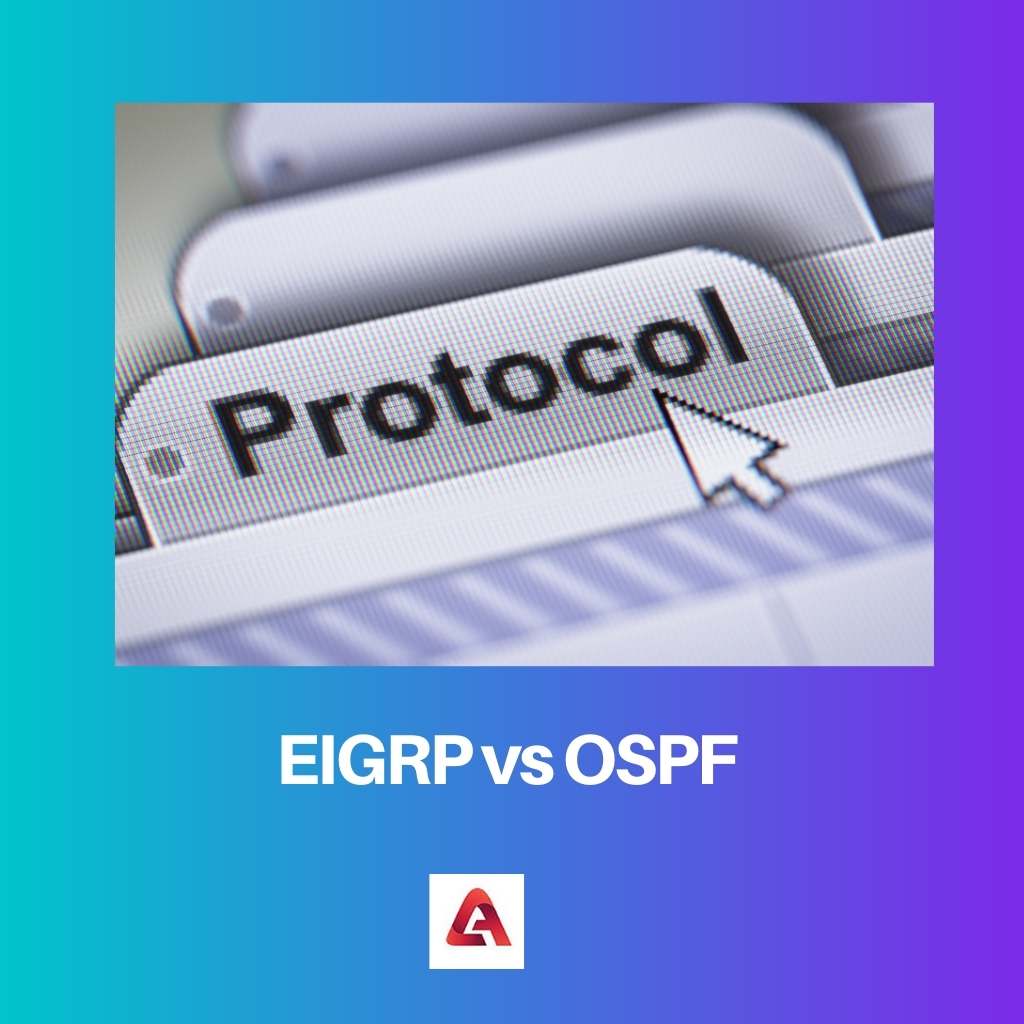EIGRP and OSPF are two of the protocols with interior gateway routing. They help in selecting the routers for sharing and transferring the data through the interaction of routers.
They are used in varied situations for different performance or delays, speed, etc.
Cisco, the leading network hardware manufacturer, made EIGR and occupies much of the market. But OSPF is used because it supports various manufacturers’ devices and strong standard protocol.
The difference does not end here, and there are many distinctions highlighted in this article.
Key Takeaways
- EIGRP (Enhanced Interior Gateway Routing Protocol) is a Cisco-proprietary protocol, while OSPF (Open Shortest Path First) is an open standard.
- OSPF uses a link-state algorithm, whereas EIGRP employs a distance-vector algorithm.
- EIGRP converges more quickly than OSPF, but OSPF provides better scalability.
EIGRP vs OSPF
The difference between EIGRP and OSPF is their scalability. EIGRP is vendor-specific and complicated and fails to migrate vendors, and leads to less scalability. On the other hand, OSPF is a simple and open standard protocol, so it can be scaled easily.

The abbreviation for Enhanced Interior Gateway Routing Protocol is EIGRP. It is used to share the information which exists in the same region from one router to another one.
EIGRP protocol is complex but can easily work in small and large networks as it uses features of link-state routing protocol and distance vector route routing known as the hybrid protocol.
The contraction of Open Shortest Path First is OSPF. It is a classless routing protocol and can be deployed and used in a variety of networks.
It also assists discontiguous networks and VLSM or variable-length subnet masking.
Comparison Table
| Parameters of Comparison | EIGRP | OSPF |
|---|---|---|
| Metric | Composite of bandwidth and delay | Cost |
| Type of routing | Advanced distance vector | Link state |
| Manual summarization | On all router | Only on ABRs and ASBRs |
| CPU requirements | Lower memory and CPU needs | High memory and CPU needs |
| Loop prevention | Split horizon and DUAL | Full knowledge of topology |
What is EIGRP?
EIGRP is a network-based protocol that lets routers exchange information more systematically compared to earlier network protocols, BGP (Border Gateway Protocol) or IGRP (Interior Gateway Routing Protocol). In the 1990s, EIGRP grew out of the efforts of Cisco to address these protocol limitations.
When tens of thousands of Cisco’s networks were connected by teleworker home offices, then the need grew for a scalable routing protocol. Cisco worked on a simple protocol that allows network administrators to assist in shifting requirements without changing the routing design.
As a result, it leads to the origin of EIGRP.
EIGRP determines the most efficient routes to destinations that are reachable in a network of links and routers. It is the distance-based decision and whether there is a loop-free destination path.
With faster convergences, it increases availability.
This protocol uses a mechanism of reliable transport to guarantee all EIGRP packets are ordered and delivered to their neighbours. The intermixed transmission of unicast and multicast packets is supported by transport.
HELLO, REPLY, UPDATE, QUERY, and REQUEST packets are five kinds of packages to facilitate session management and pass messages.
What is OSPF?
Routers connect networks with the help of IP or Internet Protocol, and OSPF is a router protocol to find the best path for packets by passing through a connected network set. This protocol is designated by the IETF or Internet Engineering Task Force as one of several IGPs or Interior Gateway Protocols.
The OSPF has largely replaced the older RIP or Routing Information Protocol in corporate networks. RIP requires routers to send every 30 seconds of the entire routing table to neighbours.
But OSPF sends only the changed part and only when a change occurs.
Due to equipment failure, routes change the time it takes the routes of OSPF to find a path that is new between endpoints with no loops or called as open. As a result, it minimizes the path length is called the convergence time.
RIP counts the router hops number between hosts on a network, OSPF simply bases the choice of the path on “link states” that takes into account extra network information. OSPF has RIP support built-in for compatibility with older networks and for the router to host communication.
Main Differences Between EIGRP and OSPF
- EIGRP is vendor-specific and complicated and fails to migrate vendors, and leads to less scalability. In contrast, OSPF is a simple and open standard protocol, so it can be scaled easily.
- EIGRP is a good option for the multivendor environment because it does not require meticulous planning of the area. On the other hand, meticulous planning of the area is required in OSPF.
- In terms of the unequal path load balancing feature, it is only supported by the EIGRP protocol. On the flip side, this feature is not supported on OSPF.
- When it comes to backward compatibility with older routers, the EIGRP is a preferable option compared to the OSPF.
- Due to the usage of the DUAL algorithm in EIGRP, where the alternative best path and the best path are selected, it can fall into the alternate best path if the best path goes wrong, and that’s why it has less convergence. But OSPF follows a different procedure and has a greater convergence time.




